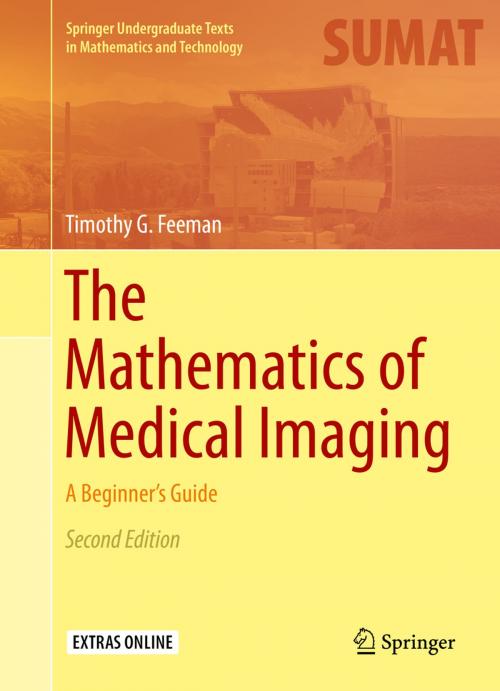The Mathematics of Medical Imaging
A Beginner’s Guide
Nonfiction, Science & Nature, Mathematics, Functional Analysis, Health & Well Being, Medical, Medical Science, Biochemistry| Author: | Timothy G. Feeman | ISBN: | 9783319226651 |
| Publisher: | Springer International Publishing | Publication: | November 19, 2015 |
| Imprint: | Springer | Language: | English |
| Author: | Timothy G. Feeman |
| ISBN: | 9783319226651 |
| Publisher: | Springer International Publishing |
| Publication: | November 19, 2015 |
| Imprint: | Springer |
| Language: | English |
The basic mathematics of computerized tomography, the CT scan, are aptly presented for an audience of undergraduates in mathematics and engineering. Assuming no prior background in advanced mathematical analysis, topics such as the Fourier transform, sampling, and discrete approximation algorithms are introduced from scratch and are developed within the context of medical imaging. A chapter on magnetic resonance imaging focuses on manipulation of the Bloch equation, the system of differential equations that is the foundation of this important technology.
Extending the ideas of the acclaimed first edition, new material has been adeed to render an even more accessible textbook for course usage. This edition includes new discussions of the Radon transform, the Dirac delta function and its role in X-ray imaging, Kacmarz’s method and least squares approximation, spectral filtering, and more. Copious examples and exercises, new computer-based exercises, and additional graphics have been added to further delineate concepts. The use of technology has been revamped throughout with the incorporation of the open source programming environment R to illustrate examples and composition of graphics. All R code is available as extra source material on SpringerLink.
From the reviews of the first edition:
“This book is valuable, for it addresses with care and rigor the relevance of a variety of mathematical topics to a real-world problem. …T
his book is well written. It serves its purpose of focusing a variety of mathematical topics onto a real-world application that is in its essence mathematics.”
–The Journal of Nuclear Medicine, Vol. 51 (12), December, 2010
“This new book by Timothy Feeman, truly intended to be a beginner’s guide, makes the subject accessible to undergraduates with a working knowledge of multivariable calculus and some experience with vectors and matrix methods. …author handles the material with clarity and grace…”
–The Mathematical Association of America, February, 2010
The basic mathematics of computerized tomography, the CT scan, are aptly presented for an audience of undergraduates in mathematics and engineering. Assuming no prior background in advanced mathematical analysis, topics such as the Fourier transform, sampling, and discrete approximation algorithms are introduced from scratch and are developed within the context of medical imaging. A chapter on magnetic resonance imaging focuses on manipulation of the Bloch equation, the system of differential equations that is the foundation of this important technology.
Extending the ideas of the acclaimed first edition, new material has been adeed to render an even more accessible textbook for course usage. This edition includes new discussions of the Radon transform, the Dirac delta function and its role in X-ray imaging, Kacmarz’s method and least squares approximation, spectral filtering, and more. Copious examples and exercises, new computer-based exercises, and additional graphics have been added to further delineate concepts. The use of technology has been revamped throughout with the incorporation of the open source programming environment R to illustrate examples and composition of graphics. All R code is available as extra source material on SpringerLink.
From the reviews of the first edition:
“This book is valuable, for it addresses with care and rigor the relevance of a variety of mathematical topics to a real-world problem. …T
his book is well written. It serves its purpose of focusing a variety of mathematical topics onto a real-world application that is in its essence mathematics.”
–The Journal of Nuclear Medicine, Vol. 51 (12), December, 2010
“This new book by Timothy Feeman, truly intended to be a beginner’s guide, makes the subject accessible to undergraduates with a working knowledge of multivariable calculus and some experience with vectors and matrix methods. …author handles the material with clarity and grace…”
–The Mathematical Association of America, February, 2010















